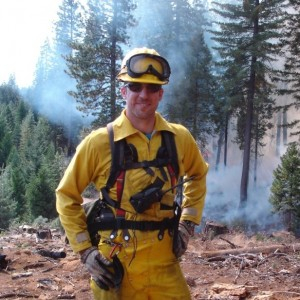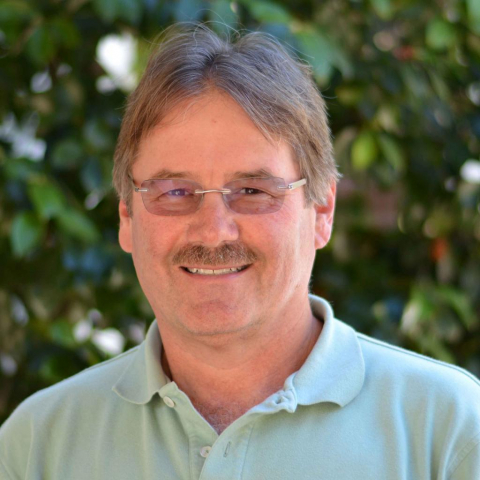Effects of fuel treatment for wildfire hazard reduction and California spotted owl habitat protection
One of the challenges of forest management is accounting for the full range of management objectives on a single landscape. Two major objectives are implementing fuel treatments for wildfire mitigation and maintaining habitat for endangered species, such as the California spotted owl (Strix occidentalis occidentalis). A 2015 study by Lindsay Chiono, Danny Fry, Brandon Collins, and Scott Stephens aimed to determine the relationship between fuel treatments, wildfire, and California spotted owl habitat across 55,398 ha (136,891 acres) in the central Sierra Nevada.
Burn probability (the likelihood that a pixel will burn given a single ignition in the study area, a.k.a "fire risk") and conditional flame length (the probability-weighted flame length given that a fire occurs, a.k.a "fire hazard") were modeled using fire behavior modeling software with an array of treatment types, treatment locations, and fuel loads (the mass of combustible materials available for a fire to burn).
Treatments locations were determined using various sets of real-world constraints (scenarios) depending on land ownership category and proximity to spotted owl Protected Activity Centers (PACs). PACs are 300 acre (121 ha) areas delineated by the United States Forest Service (USFS) as best-quality habitat near nesting/roosting habitat. Allowable fuel treatment methods within PACs are generally limited under current USFS standards and guidelines.
Three treatment scenarios were used:
- Scenario 1: Fuel treatments on public land only, PACs excluded
- Scenario 2: Fuel treatments on public land only, including spotted owl PACs
- Scenario 3: Fuel treatments across all land ownerships
Burn probability and conditional flame length for each treatment scenario were modeled under two fuel loadings: low fuel and high fuel. Fuel treatment methods used were hand thinning, biomass thinning, commercial thinning, broadcast burning, and pile burning. The fuel treatment method used in a particular stand varied depending on the land designation (public, PAC, private).
The map below shows burn probability modeling results with high fuel loading under Scenario 1. Negative burn probability values indicate an increase in burn probably, while positive values indicate a reduction.
Results from the study are summarized in the table below. Overall, treatment reduced landscape burn probability by approximately 50% (average across high and low fuel loadings).
|
Percent reduction in burn probability relative to no treatment scenario |
|||||||||||
|
|
------Low fuel------ |
|
------High fuel----- |
|
--------AVG--------- |
||||||
|
|
S1 |
S2 |
S3 |
|
S1 |
S2 |
S3 |
|
S1 |
S2 |
S3 |
|
All PACs |
45% |
64% |
56% |
|
53% |
63% |
59% |
|
49% |
64% |
57% |
|
Treated PACs |
NA |
81% |
76% |
|
NA |
57% |
67% |
|
NA |
69% |
72% |
|
Untreated PACs |
45% |
53% |
51% |
|
53% |
54% |
58% |
|
49% |
53% |
54% |
|
|
|
|
|
|
|
|
|
|
|
|
|
|
All stands |
44% |
48% |
53% |
|
50% |
53% |
56% |
|
47% |
50% |
54% |
|
Treated stands |
76% |
79% |
63% |
|
72% |
74% |
74% |
|
74% |
76% |
69% |
|
Untreated stands |
35% |
39% |
49% |
|
45% |
47% |
51% |
|
40% |
43% |
50% |
Treatments reduced average landscape conditional flame length from 3.6 m to 2.5-2.7 m when compared to the no treatment scenario.
The results of this study demonstrate that fuel treatments can alter fire risk and hazard in both treated and non-treated areas across a landscape. Treating across all land designations (Scenario 3) provided the greatest treatment effectiveness by allowing for maximum focus on high-fire hazard areas; this likely contributed to the greater reductions in burn probability under this scenario. However, even in scenarios where treatment placement was limited by land designation or ownership, treatments led to reduced burn probability and conditional flame length across nearly the entire landscape.
Downloads
Any questions about the study should be sent to Dr. Brandon Collins, bcollins@berkeley.edu.
Principal Investigators

Brandon Collins
Berkeley Forests

Scott Stephens
Berkeley Forests
